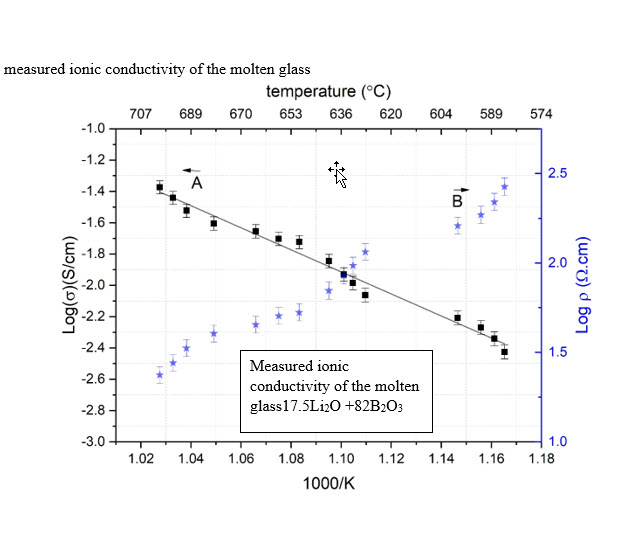Sat, Jan 4, 2025
[Archive]
Volume 20, Issue 4 (December 2023)
IJMSE 2023, 20(4): 1-9 |
Back to browse issues page
Download citation:
BibTeX | RIS | EndNote | Medlars | ProCite | Reference Manager | RefWorks
Send citation to:



BibTeX | RIS | EndNote | Medlars | ProCite | Reference Manager | RefWorks
Send citation to:
Eftekhari Yekta B, Banapour Ghafari O. Electrical Conductivity in the Molten and Glassy States of the Li2(O, Cl2, I2)-B2O3 system. IJMSE 2023; 20 (4) :1-9
URL: http://ijmse.iust.ac.ir/article-1-3300-en.html
URL: http://ijmse.iust.ac.ir/article-1-3300-en.html
Abstract: (8039 Views)
Glasses in the B2O3-Li2 (O, Cl2, I2) system were prepared through the conventional melt-quenching method. Then, the conductivity of the molten and glassy states of these compositions was evaluated. Furthermore, the thermal and crystallization behavior of the glasses was determined using simultaneous thermal analysis (STA) and X-ray diffractometry (XRD). The electrical conductivity of the melts was measured at temperatures ranging from 863 to 973 K, and the activation energy of the samples was calculated using the data obtained from ion conduction in the molten state and found to be in the vicinity of 32 kcal/mol. In glassy states, electrical conductivity was also measured. To determine this property, the electrochemical impedance spectroscopy method (EIS) was used. In the molten state, temperature played an important role in the ion conductivity; however, at lower temperatures, other factors became important. Based on the results, the addition of LiI and LiCl to the B2O3-Li2O base glass system (75 B2O3, 10 Li2O, 7.5 LiI, 7.5 LiCl) (mol%) increases the ionic conductivity of the glass from 3.2 10-8 S.cm-1 to 1.4 10-7 S.cm-1 at 300 K.
Type of Study: Research Paper |
Subject:
Ceramics
Send email to the article author
| Rights and permissions | |
 |
This work is licensed under a Creative Commons Attribution-NonCommercial 4.0 International License. |







